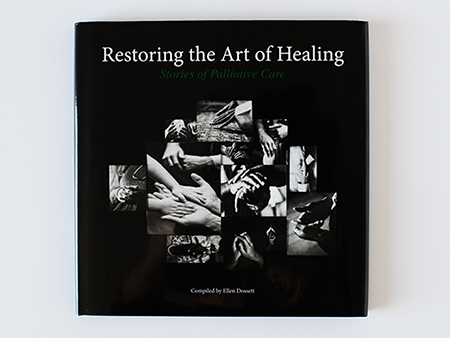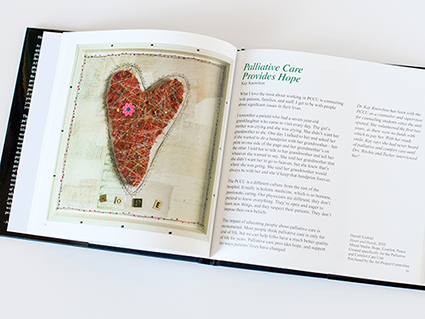 The book is for sale for $30. In the past two decades, the Center for Palliative and Supportive Care at the University of Alabama at Birmingham has grown from a supportive care clinic to one of the largest and most comprehensive clinical care, education and research enterprises focused on palliative care in the United States. To celebrate its 20th anniversary at UAB, the palliative care team, along with several volunteers, created a book to highlight the program’s history and the people who have helped it succeed along the way.
The book is for sale for $30. In the past two decades, the Center for Palliative and Supportive Care at the University of Alabama at Birmingham has grown from a supportive care clinic to one of the largest and most comprehensive clinical care, education and research enterprises focused on palliative care in the United States. To celebrate its 20th anniversary at UAB, the palliative care team, along with several volunteers, created a book to highlight the program’s history and the people who have helped it succeed along the way.
The book, “Restoring the Art of Healing: Stories of Palliative Care,” was compiled by Ellen Dossett, a volunteer at the UAB Palliative and Comfort Care Unit. It consists of essays written by members of the palliative care team, volunteers and the loved ones of former patients.
“This is a compilation of many different experiences in palliative care — from our nurses to our volunteers and other interdisciplinary team members, everyone has a voice, and through every story, you get a glimpse of the work of palliative care,” said Jennifer Hicks, administrative director of the Center for Palliative and Supportive Care at UAB. “It also provides a timeline of the milestones the Palliative Care program has achieved over the past 20 years, painting the picture of just how far we’ve come as a medical specialty, and especially our program here at UAB.”
The book also highlights the privilege members of the palliative care team feel to be in their roles. In an excerpt from an essay written by Estella Woods-Holmes, the nurse manager of the Palliative and Comfort Care Unit at UAB, she writes about how she feels the unit is home to her.
“I was chosen to be the person — not the nurse, the person — at the bedside when somebody is at their lowest of lows, to be there with them. I may be the last person they see. I may be the last person who touches them. I think it is a great honor,” Woods-Holmes wrote.
Others write about the meaningful interactions they have had with patients and their families, including the work the palliative care team has done to make someone feel more comfortable and special.
In one instance, Michael Barnett, M.D., describes how he learned that the day a man in his 40s was admitted to the unit and diagnosed with pancreatic cancer also happened to be the patient’s wedding anniversary. Barnett alerted the unit, and by the time the patient and his wife arrived in his room, there were a two-tier wedding cake, an ice bucket with sparkling grape juice and two champagne flutes waiting for them on the bedside table.
“The stories from all these different perspectives really have one thing in common — the acknowledgment of the privilege we have to serve seriously ill people and their loved ones during very vulnerable times in their lives,” Hicks said. “Each story and author have their own way of sending that message, and that is what makes palliative care at UAB so special.”
The book, which is $30, is available for purchase on the Center for Palliative and Supportive Care website at this link. For more information about palliative care at UAB, visit the center’s website.
